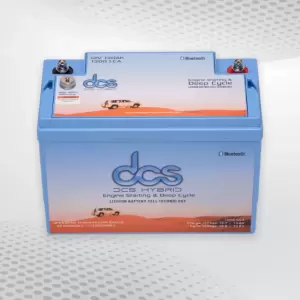In the fast-paced world of the restaurant industry, efficiency, customer service, and profitability are key factors that determine success. As the industry evolves, so too does the technology that supports it. One of the most significant developments in recent years has been the rise of restaurant software. Whether you’re opening a new restaurant, managing a chain, or simply looking to modernize your operations, understanding restaurant software is crucial. This guide will walk you through the basics of restaurant software, its importance, types, and how to choose the right solution for your establishment.
What is Restaurant Software?
Restaurant software is a broad term that refers to various digital tools and platforms designed to help restaurant owners and managers run their businesses more efficiently. These software solutions cover a wide range of functions, from point-of-sale (POS) systems and reservation management to inventory control and customer relationship management (CRM). The goal of restaurant software is to streamline operations, reduce manual tasks, improve accuracy, and ultimately enhance the customer experience.
Why is Restaurant Software Important?
The restaurant industry is highly competitive, and margins can be thin. Restaurant software helps businesses stay ahead by improving efficiency, reducing costs, and providing valuable insights into operations. Here are some key reasons why restaurant software is essential:
- Efficiency and Speed: Automated processes reduce the time spent on manual tasks, allowing staff to focus on more important aspects of the business, like customer service.
- Accuracy: Errors in orders, inventory management, or billing can be costly. Restaurant software minimizes these errors by automating tasks and providing real-time data.
- Data-Driven Decisions: With detailed analytics and reporting, restaurant software helps managers make informed decisions based on actual data rather than intuition.
- Customer Satisfaction: By streamlining operations and offering features like online ordering, loyalty programs, and personalized marketing, restaurant software enhances the overall customer experience.
- Scalability: As your business grows, restaurant software can easily scale with it, allowing you to manage multiple locations, track performance, and maintain consistency.
Types of Restaurant Software
There are various types of restaurant software available, each designed to address specific needs within the industry. Understanding these categories will help you determine which solutions are right for your business.
1. Point of Sale (POS) Systems
A POS system is the backbone of any restaurant’s operations. It is the central hub where orders are placed, payments are processed, and sales data is recorded. Modern POS systems are much more than just cash registers; they offer a wide range of features, including:
- Order Management: POS systems streamline the ordering process by allowing servers to input orders directly into the system, which then sends the information to the kitchen or bar. This reduces the chances of miscommunication and speeds up service.
- Payment Processing: POS systems support various payment methods, including credit/debit cards, mobile payments, and gift cards. This flexibility is crucial in today’s diverse payment landscape.
- Sales Tracking and Reporting: POS systems provide detailed sales reports, helping managers track performance, identify trends, and make data-driven decisions.
- Inventory Management: Some POS systems include inventory management features, allowing you to track stock levels, set reorder alerts, and reduce waste.
2. Reservation and Table Management Software
Managing reservations and table assignments can be a complex task, especially during peak hours. Reservation and table management software simplifies this process by offering features such as:
- Online Reservations: Customers can book tables online, reducing the need for phone reservations and minimizing the risk of double bookings.
- Table Assignment: The software can automatically assign tables based on factors like party size, server availability, and customer preferences.
- Waitlist Management: When tables are full, the software can manage a waitlist and notify customers via text or email when their table is ready.
- Customer Data: Keep track of customer preferences, special requests, and visit history to provide a personalized dining experience.
3. Inventory Management Software
Inventory management is crucial for controlling costs and reducing waste. Inventory management software helps you track stock levels, manage suppliers, and optimize ordering processes. Key features include:
- Real-Time Tracking: Monitor inventory levels in real-time, so you always know what’s in stock and what needs to be reordered.
- Supplier Management: Manage relationships with suppliers, track deliveries, and negotiate better prices based on purchase history.
- Waste Reduction: By accurately tracking inventory, you can identify areas where waste is occurring and take steps to minimize it.
- Cost Control: Inventory management software helps you keep track of food costs, ensuring that you maintain profitability.
4. Customer Relationship Management (CRM) Software
Building and maintaining strong relationships with customers is key to a restaurant’s success. CRM software helps you manage customer interactions, track preferences, and create targeted marketing campaigns. Features include:
- Customer Profiles: Store detailed information about customers, including contact details, dining preferences, and order history.
- Loyalty Programs: Create and manage loyalty programs that reward repeat customers and encourage them to visit more often.
- Targeted Marketing: Use customer data to create personalized marketing campaigns, such as email promotions or special offers for birthdays.
- Feedback Management: Collect and analyze customer feedback to identify areas for improvement and enhance the dining experience.
5. Employee Scheduling and Management Software
Managing staff schedules, tracking hours, and handling payroll can be time-consuming tasks. Employee scheduling and management software simplifies these processes by offering features such as:
- Shift Scheduling: Create and manage employee schedules, taking into account availability, labor laws, and peak hours.
- Time Tracking: Track employee hours accurately, ensuring that you comply with labor regulations and avoid overstaffing or understaffing.
- Payroll Integration: Integrate with payroll systems to streamline the payment process and reduce administrative work.
- Performance Tracking: Monitor employee performance, track tips, and identify areas where additional training may be needed.
6. Online Ordering and Delivery Management Software
With the rise of online ordering and food delivery, having a reliable system to manage these aspects is crucial. Online ordering and delivery management software offers features such as:
- Order Integration: Integrate online orders directly with your POS system, ensuring that they are processed quickly and accurately.
- Delivery Tracking: Manage delivery orders, assign drivers, and provide customers with real-time tracking of their orders.
- Menu Management: Easily update your online menu, manage pricing, and offer promotions or discounts.
- Customer Notifications: Keep customers informed with automated notifications about order status, delivery times, and promotions.
How to Choose the Right Restaurant Software
Choosing the right restaurant software can be a daunting task, given the wide range of options available. Here are some factors to consider when making your decision:
1. Identify Your Needs
Start by assessing your restaurant’s specific needs. Are you looking for a comprehensive POS system, or do you need specialized software for reservations, inventory, or CRM? Understanding your priorities will help narrow down your options.
2. Budget Considerations
Restaurant software can range from affordable to expensive, depending on the features and level of customization you require. Consider your budget and look for software that offers the best value for money. Keep in mind that while the initial cost is important, the long-term return on investment (ROI) should also be a key factor.
3. Ease of Use
The software you choose should be user-friendly, with an intuitive interface that is easy for your staff to learn and use. Complex software can lead to mistakes, frustration, and wasted time. Many software providers offer demos or trial periods, so take advantage of these to test the software’s usability.
4. Integration with Existing Systems
If you already have some systems in place, such as a POS or inventory management system, make sure the new software can integrate seamlessly with them. Integration reduces the risk of data silos and ensures that all your systems work together smoothly.
5. Scalability
As your restaurant grows, your software needs may change. Choose software that can scale with your business, whether that means adding new features, integrating with additional tools, or expanding to multiple locations.
6. Customer Support
Good customer support is essential, especially when you’re dealing with technology that is critical to your business operations. Look for software providers that offer reliable customer support, whether through phone, email, or live chat. Check reviews and testimonials to gauge the quality of their support.
7. Security
Your restaurant software will handle sensitive data, including customer information and payment details. Ensure that the software provider follows best practices for data security, such as encryption, secure payment processing, and regular security updates.
8. Customization
Every restaurant is unique, and you may have specific requirements that off-the-shelf software doesn’t meet. Look for software that offers customization options, whether it’s adding specific features, adjusting the interface, or integrating with other tools.
9. Training and Onboarding
Implementing new software requires training your staff to use it effectively. Choose a provider that offers comprehensive training and onboarding support to ensure a smooth transition.
10. Reviews and Reputation
Finally, research the reputation of the software provider. Read reviews from other restaurant owners, check their track record, and consider the longevity of the company. A reputable provider with a strong history in the industry is more likely to offer reliable and effective solutions.
Conclusion
Restaurant software is an essential tool for modernizing your operations, improving efficiency, and enhancing the customer experience. With the right software, you can streamline everything from order management and inventory tracking to customer relationships and employee scheduling. By understanding the different types of restaurant software and carefully considering your needs, you can choose the right solution that will help your restaurant thrive in a competitive industry. Whether you’re just starting out or looking to upgrade your current systems, investing in quality restaurant software is a smart move that can lead to long-term success.



